Last winter these Japanese tourists seemed to be lost and were desperately checking a map. I hope they were not looking for Canaletas fountain, the illustrious symbol of Barcelona Football Club, the place where we go to celebrate special victories (hmm definitely not this year), only because they got it right behind. Pushing the bad joke way too far I would dare to say some Real Madrid fan gave them the wrong directions on purpose. No, no, forget about this cheesy gag and concentrate on the place, Las Ramblas de Barcelona, the beautiful promenade and its people always coming and going, people from all over the world, having the hell of a great time in the city, both repetitive visitors and newcomers alike.
Barcelona photos: Daily photographs of Barcelona, Spain. Pictures of a modern city with travel tips in a personal photoblog. A photography and travel site. Art, architecture, people and traditions. Travel to Barcelona through my camera, know more about our city and towns nearby. Welcome!
Wanna be featured?
July 07, 2008
Japanese Tourists in Canaletas: Wrong Directions?
Last winter these Japanese tourists seemed to be lost and were desperately checking a map. I hope they were not looking for Canaletas fountain, the illustrious symbol of Barcelona Football Club, the place where we go to celebrate special victories (hmm definitely not this year), only because they got it right behind. Pushing the bad joke way too far I would dare to say some Real Madrid fan gave them the wrong directions on purpose. No, no, forget about this cheesy gag and concentrate on the place, Las Ramblas de Barcelona, the beautiful promenade and its people always coming and going, people from all over the world, having the hell of a great time in the city, both repetitive visitors and newcomers alike.
July 06, 2008
Wisdom: Catalonia Square, Barcelona, Spain
This is one of the statues at Plaça Catalunya (Catalonia Square). Around the center of the square there are different sculptures, each of them with an allegoric name. The one you can see in today's picture is called Sabiduría (Wisdom) and on the pedestal you can easily read the name of the artist: Miguel Oslé 1929.
July 05, 2008
Detail of Casa Lleó Morera at Passeig de Gracia 35, Barcelona, Spain

This is a detail of the small turret on top of Casa Lleó i Morera at Passeig de Gràcia 35.
The modernist house by Lluís Domènech i Montaner is part of the renown Illa de la Discordia (Block of Discord) called this way due to the clash of different styles between three famous houses in the block. The other two are Casa Amatller at Passeig de Gràcia 41 designed by Josep Puig i Cadafalch and Casa Batlló at Passeig de Gràcia 43 designed by Antoni Gaudí.
The building is located on the corner of Consell de Cent and Passeig de Gracia and was originally constructed in 1864 and renovated in 1902.
When you come to Barcelona it would be almost a crime not to visit this Manzana de la Discordia. For those that are less interested in art and more in going shopping, there's a Loewe shop in the ground floor.
July 04, 2008
La Unión y el Fénix Building, Passeig de Gracia 21, Barcelona, Spain

July 03, 2008
Best Pastry Shops in Barcelona: Mauri
Mauri pastry shop on the corner of Rambla Catalunya and Provença is one of the best pastelerias (pastry shops) in Barcelona. Founded by Francesc Mauri in 1929 who owned Núria Restaurant one of the most emblematic at the beginnings of last century, Mauri was in the core of the most elegant and exclusive area of L'Eixample quarter. In 1955 it had to be restored after the damage caused by a fire. Although the founders had died some years before, the family kept the business going adding other services apart from traditional pastry and confectionery. A chocolate shop with tea room was inaugurated in 1978. In 1985 they opened up a delicatessen with catering and a restaurant. Although the price matches the uniqueness of the place Barcelona Photoblog highly recommends it not only for the offer but also for the epoch's modernist architecture which is well preserved.
July 02, 2008
Casa Mila: A Whole Lotta Door

Caught in the spiderweb of art, I fell I had to show you the door from within.
Check the outside here.
A whole lot of ironwork for a door, a huge smashing blow to all former architectural styles, the opening gates to the land of impossible things.
Ladies and gentlemen, welcome to La Pedrera and the imagination of Antoni Gaudi.
July 01, 2008
Poverty-Stricken Barcelona: Woman Begging, Paseo de Gracia
I won't judge this time. I leave it up to you. This is a woman begging on the corner of Passeig de Gracia and Plaça Catalunya, just in front of El Corte Inglés. One of the richest spots in Barcelona. It was a very hot afternoon, the normal kind of day this time of year, the same all stuff, lots of people, sweating all over. And there she was. People seemed to draw a safety perimeter around her with their feet. The same old story.
June 30, 2008
Ironwork on Balcony at La Pedrera or Casa Mila in Paseo de Gracia, Barcelona, Spain
I am sure this building Casa Mila also known as La Pedrera rings a bell. Maybe you saw the picture somewhere, in a postcard or in some expensive art book. Perhaps you are lucky enough to have visited Barcelona in the past and you wouldn't say no to a second or a third chance to see it. Well, it is never like the real thing, absolutely not, but if you click on today's image of the ironwork on one of the front balconies you will enjoy a very, very close shot of the famous façade. Not that there are few images like mine, but certainly you will appreciate every detail of the floral motifs. For more information read Casa Mila and follow the rest of links in the post.
June 29, 2008
Art Nouveau Lamp at Casa Mila or La Pedrera
This impressive art nouveau lamp that reminds me of some ancient diver's helmet or the head of a dragonfly with a little more imagination, hangs from the ceiling in the hall of La Pedrera or Casa Mila, built by Gaudi between 1906 and 1910. Brothers Badia were the iron forgers so I assume they had to do with this lamp but so far I haven't been able to find out who designed such beauty. You can find a thumbnail of La Pedrera on my Google Map below.
June 28, 2008
African Drummer in Barcelona
Percussion from the very source, the origins, Africa. Distant drums pounding communicating each other in the vast savanna. This is a detail of an African drummer, in fact they were too. They played at my daughter's school as part of the celebrations to say goodbye to 6th grade students graduating this year. Next year secondary school. Good luck Sara.
June 27, 2008
Guardia Civil Patrolling Barcelona Harbor
Some people have to do the dirty job so we all can enjoy the city in peace so a big thank to the boys. Not that they are very popular in Barcelona, but I guess the police has always and will always be criticized or laughed at cause we always see the wrongs and never give too much credit to their glorious acts or their silent work. Whether it's a madero, a flic, a cop or a bobby let them be.
June 26, 2008
June 25, 2008
Candied Fruit Pastry or Coca de Sant Joan
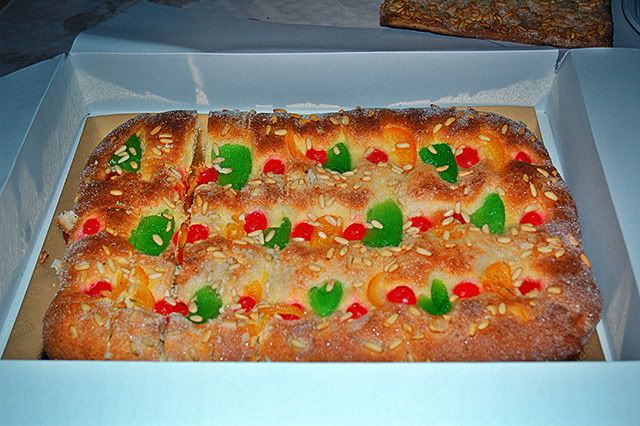
June 24, 2008
Sant Joan Firecrackers: Launching Gadget Closeup
The word petardo in Spanish or petard in Catalan has different meanings: banger, firecracker, that is, a small explosive device. Not only that, it can be someone or something that's boring. Sometimes it can be a fraud but the most curious entries are "a hag, an old hag" what we know as a petarda and a joint, you know, the smoking kind. My intention today was to show not only firecrackers but the gadgets some people use to launch the artifacts. Many are completely handmade and others can be bought in stores. By the way, firecrackers are sold at special stalls which are regulated by city authorities. Normally they are located in the middle of a square with some fences all around and only two clients can be in front of the counter at the same time. Apart from that, you can also find specialized shops and major dealers for professional purposes.
June 23, 2008
Sant Joan's Eve Firecrackers
Bonfires of Saint John (Fogueres de Sant Joan in Catalan) aka Nit de Sant Joan or Revetlle de Sant Joan on June 23rd is time for firecrackers (petardos), cocas (a sort of pastry) and cava which is in other words the Catalan version of champaign. If you follow the above link you will find out that this event intended to welcome the arrival of summer is not exclusively ours although we celebrate it perhaps more intensely than in other places. It must be said that bonfires are not as popular now as in the past when people used to take old furniture into the middle of the street to watch it burn and party all around. Now you have to go to the beach where the city council still allows bonfires and massive celebrations. The mess is so big that special brigades of garbage collectors have to be organized to clean up the sand from all sorts of bottles, shoes, and assorted crap. Most of us avoid these mega parties and gather with family and friends to eat and drink till late in the evening. All night long before and after supper we find some place in the garden or go to the nearest square to ignite firecrackers. In spite of all this you can hear firecrackers big and small, during the whole month of June. The one in the picture was a turning wheel not particularly dangerous. Some others are scaring just like the sort of big tube a friend of us tied up to a pole. The artifact got twisted upon burning and sent "shrapnel" against the big bucket where we had the beers on ice, piercing through it and leaving a big hole that emptied the whole thing in seconds.
June 22, 2008
Polinesian Ship Attraction in Port Aventura, Tarragona, Spain
And here's another attraction at Port Aventura amusement park in Tarragona. The ship is located in the Polinesia area. I am not very fond of this one. I get sick with the ups and downs. This time I stood in the shade and calmly composed my picture. Don't forget to click on the image for a better view!
June 21, 2008
Pear Tree Flowers
Just some pear tree flowers I happened to shoot at the beginning of spring, if there ever was spring this year. Summer is already here, hot weather and all. Not that we had too many sunny days in the past two months.
June 20, 2008
Bacon but not Francis
To continue in my quest for a surprising topic that kills monotony a little bit I'd like to add another picture about Spanish food. I know many of you prefer to get in touch with local stuff be it culture, architecture, traditions or food rather than contemplating my last abstraction or the picture I took of my reflection in the mirror, you know. I hope you don't get too disappointed because I don't show Barcelona streets lately. It's just that I prefer being eclectic. Besides, the ugliest of things like bacon in this case may be interesting if you try to work out the best way to make it look attractive. In other words, you can have fun with you camera with the most obvious things. There was a previous post I recommend you visit too: Bacon: A Still Life Portrait and perhaps you'd like to check a curious site called I Heart Bacon.
June 19, 2008
Sausage Spread or Sobrasada
Sobrasada (Sausage Spread) is in the group of sausages made with pork. It is prepared with minced meat and lard. The great amount of Spanish paprika or "pimentón" gives it the characteristic color and the peculiar flavor. Sobrasada is a Majorcan speciality. Although you can buy it all over Spain, the authentic, the one that really makes a difference, is from Majorca in the Balearic Islands.
June 18, 2008
Spanish Food: Aged Manchego Cheese
![Spanish Food: Aged Manchego Cheese [enlarge]](https://i63.photobucket.com/albums/h135/carloslorenzo/AgedManchegoCheese_.jpg)
Named after La Mancha which is the Spanish region of famous Don Quixote, these aged Manchego cheese are made of sheep milk. They say the aroma reminds of lanolin and roast lamb. It has a slightly briny, nutty flavor and at the age of 13 weeks it is considered cured (curado). Over that period it is referred to as aged (viejo). There are other well known kinds of Spanish cheese: Cabrales, Idiazabal, Zamorano, Tetilla, Liebana, Roncal...In Catalonia we have Mató de Montserrat which is a fresh cheese (formatge fresc). From the Balearic Islands, specifically from Menorca, we have Mahon cheese which is one of my favorites. A link today: The Encyclopedia of Cheese.
June 17, 2008
June 16, 2008
Pan de Payés or Pa de Pagès: Traditional Peasant's Bread in Catalonia
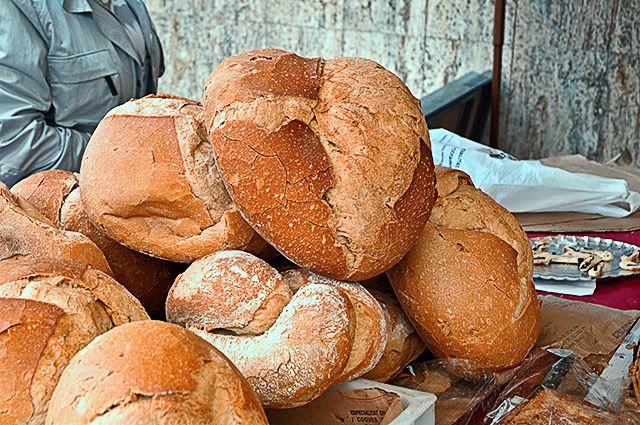
June 15, 2008
Wooden Donkey at Torrelles de Llobregat Market near Barcelona
June 14, 2008
Pickled Green Tomatoes in Barcelona
These pickled green tomatoes caught my attention at a street market. The bowl I found among other kinds of pickle products like olives or onions. It is not very common here to see green tomatoes prepared that way, at least not for us in Barcelona city. I was standing there preadjusting my camera settings and I had the opportunity to listen to some customers talking to the man in the stall. "Are these olives?" - they asked with surprise. "No, those are green tomatoes from Valencia" - said the stall man. It's a rather ridiculous story but I found the comparison between olives and green tomatoes rather ackward. Here is a green tomato pickle recipe.
June 13, 2008
Lantana Closeup in Barcelona
This is a lantana I came across in some Barcelona garden. It has been a very rainy season in the city in spite of the water crisis of past months so flowers look healthier than ever and make good photographs. Check an older picture of Lantanas. Have a nice weekend everyone!
June 12, 2008
Espadrilles: Spanish Alpargatas or Catalan Espardenyes
es·pa·drille (sp-drl) n. A shoe usually having a fabric upper part and a sole made of a flexible material, such as rope or rubber. The term espadrille is French and derives from espardenya, which derives from espart, the Catalan name for esparto [from Latin spartum] , a tough, wiry Mediterranean grass used in making rope. Espadrilles have been made in Catalonia since the 14th century at least. Here is a good place to buy yourself some comfortable espardenyes.
June 11, 2008
Street Market: Colorful Ribbons or Bracelets With Girl Names
Something I like about street markets in Barcelona and the rest of the country is that many times when you don't like what you see you can always go and refresh your eyes with the explosion of colors of South American stands. I mean, there is always a Bolivian or Peruvian stall where you don't know exactly what's on sale but you can't help staring with curiosity. Something is telling you that you want to buy. Not because of the pottery, the Che Guevara or Bob Marley T-shirts and the familiar leaf silhouette, not because of these personalized ribbons or bracelets with girl names but because of the whole impression, the warm colors, the Latin flashy hues that make the stand look more appealing than the rest. For me, much better than a 50 percent off sign.
June 10, 2008
Rusty Door Knocker in Torrelles de Llobregat , Barcelona, Spain
This beautiful rusty door knocker I captured at Torrelles de Llobregat near Barcelona although it could have been in Barcelona city perfectly as here we have many. The knocker represents some kind of mythological being perhaps. What do you make of it? I think I kind of like old door knockers and maybe I collect them in the future, the images of course. I remember a couple of posts in Barcelona Photoblog that you should check too: Vandalized Door Knocker or Modern Art? and Knocker on Chocolate Color Door at El Raval Quarter, Barcelona. Or maybe you prefer a list of famous door knockers.
June 09, 2008
Bobbin Lace or Encaje de Bolillos, Torrelles de Llobregat, Barcelona, Spain

This is a picture I took in Torrelles de Llobregat. You can see here in detail how bobbin lace, known in Spanish as encaje de bolillos, is made.
First you need a pattern or parchment where holes are pricked to mark the place for all the pins. The parchment is always laid on a pillow or cushion. The lace is worked with each hand holding at least a pair of bobbins, the wooden elongated spools or shuttles hanging from the threads, which are moved from side to side to form a twist, a braid, or a clothlike fabric called toile. The motifs are worked in a more dense stitch, and the ground is made with a looser stitch.
Bobbin lace originated in Flanders in the early 16th century although some say it came from Italy. From Flanders it extended to the rest of Europe. It was used for ruffs and collars back then.
In Spain it was customary to teach girls how to work bobbin lace at school and at home as it was considered an essential part of a woman's education.
Check this video about bobbin lace. It is short and not too illustrative but it has a brief explanation in English that might help.
June 08, 2008
Maracatu Percussion Band, Festa de la Cirera, Torrella de Llobregat, Barcelona
June 07, 2008
Cherry Festival (Festa de la Cirera), Torrelles de Llobregat, Barcelona
![Cherry Festival (Festa de la Cirera), Torrelles de Llobregat, Barcelona [enlarge]](https://i63.photobucket.com/albums/h135/carloslorenzo/CherryFestival-TorrellesdeLlobregat.jpg)
With these cherries I would like to introduce you to the Festa de la Cirera (cherry festival and market) celebrated in Torrella de Llobregat this weekend. This small town from Xth c. is only some kilometers away from Barcelona city. In fact Torrelles is a municipality in the Baix Llobregat comarque on the right bank of Llobregat river (one of the two rivers surrounding Barcelona). I have some more pictures which I'll show you in coming posts. Check Torrelles de Llobregat on Google maps.
The annual cherry festival at Torrelles de Llobregat holds deep historical significance in the Catalan region. Dating back centuries, the tradition was born out of the area's fertile soil and ideal climate for cultivating cherries. Catalan cherry orchards have long been renowned for their exceptional quality and distinctive taste.
Over time, the festival has evolved into a cherished cultural event, serving as a platform to honor the centuries-old cherry-growing heritage. It has become a symbol of community pride, where locals come together to celebrate their agricultural traditions and pay homage to the land that sustains them.
The festival's roots can be traced to the age-old practice of organizing fairs to showcase the region's bountiful harvest. Torrelles de Llobregat, with its picturesque countryside dotted with cherry trees, became the perfect setting to host this annual gathering.
Through the centuries, the festival has witnessed the evolution of cherry cultivation techniques, the introduction of new varieties, and the advancement of cherry-related industries. Today, it stands as a testament to the resilience and passion of Catalan cherry growers who have preserved this cultural heritage through generations.
The annual cherry festival not only offers a delightful gastronomic experience but also serves as a living history book, reminding us of the traditions, skills, and dedication that have shaped Catalonia's renowned cherry industry.
June 06, 2008
Gerbera Daisy Close-up
This is what was left of a gerbera daisy or at least that's how I figure it is called. Some time ago I posted a similar picture and I was kindly given the right name. I think it was Heather who did it. Thanks again. If I am in a mistake today blame me! Of course my posts are not about taxonomy but beauty, my concept of beauty. Sometimes I am lucky to match yours and more than often I fail. That's the wonderful thing. The world would be very boring otherwise.
June 05, 2008
Barcelona Trees: Horse Chestnut or Conker Flowers
Aesculus hippocastanum or common horse chestnut can be seen in some parks of Barcelona so I thought you might like the image of its flowers. These I shot in Bellaterra in early spring. I suppose it must have yielded the characteristic spiny conkers by now. From the seeds of this tree a substance called saponin aescin is extracted and used for health purposes like treating varicose veins, edema, sprains. This constituent strengthens the blood vessels and prevents thrombosis. It has haemolytic properties and is recommended as an astringent and circulatory tonic. The extracts from horse chestnut are used to treat cellulitis. So you see, the beautiful tree and its flowers are not just an adornment. Talking about adornment. Did you know that the leaves of horse chestnut trees are a common pattern in art nouveau architecture? Well, follow this fantastic link and you'll find out more about the use of nature in the Art Nouveau decoration.
June 04, 2008
Centric Point Hostel: Passeig de Gracia 33, Barcelona, Spain

Not too long ago, I uploaded three pictures about hotels in Barcelona. I suggested they could be right although it was not an affirmation. After some thought I reckon that talking only about hotels wouldn't be fair with the hostel business or better yet with young people who want to enjoy Barcelona on a low budget.
I have to confess here that whenever I think of hostels many dark, shabby places come to my mind. Every city has scary hotels, motels or hostels. But you know cliches are not to be taken too seriously. The other day, I noticed a group of young boys and girls were having a chat on the corner of Passeig de Gracia and Consell de Cent. They had come out of a building with a big sign on the door that read: Centric Point Hostel. In fact this is nothing that calls your attention for more than two seconds. They were all blond, dressing casual and showing off that unmistakable white skin that's bound to be sunburnt the following day or is already as red as a boiling lobster's shell. They didn't look like the average backpacker though, and they seemed to be pretty happy talking there. All of that made me muse a little: "Hey, this hostel in the middle of Passeig de Gracia looks like a hotel!". On one of the balconies with some towels drying up in the sun (something unthinkable in this part of the city) I saw a girl leaning and looking towards the modernist buildings nearby and I realized how privileged she was of having such great view of the most frequented and elegant street of Barcelona. The cherry on top was that the building is modernist too and has been recently restored. I am sure there are lousy places to stay in Barcelona but this one is definitely not, you would say it's a like 3 star hotel!. So I decided to share a hostel post with you today starting with a good one, of course you definitely have to check other sources too.
Here is a list of places near Centric Point Hostel:
Las Ramblas (5 minutes walking), Catalunya square (3 minutes walking)and many art nouveau (Catalan modernisme) houses such as Gaudi's Casa Batlló (50 metres), Casa Amatller (45 metres), Gaudi's Casa Milá also known as La Pedrera (5 minutes walking) or Casa Lleo Morera (5 metres). I forgot to say that along Passeig de Gracia you have the best shops in town no wonder it is one of the most expensive streets in Barcelona and Spain but you don't need to worry about that too much as it is always easy to find cheaper places to shop around in the area. I also go downtown everyday and never buy an Armani you know.
Maybe you want me to recommend some other hostels so you can compare: Hostels and a map of hostels. Have a nice, cheap and comfortable stay in Barcelona!
June 03, 2008
National Theater of Catalonia
June 02, 2008
A Day at the Races
If you've visited a local fair maybe you are familiar with the usual horse race to fight for a wonderful teddy bear. We went to Port Aventura and I prayed for my daughter not to win the first price. She had never played before so the odds were little. Bulls***, she won an enormous banana, taller than me and we had to hold it all along the park so imagine how funny it should be.
June 01, 2008
Inside the Bubble, Bubblebou Show by Pep Bou

Another picture of the Bubblebou show created by Pep Bou.
This time the artist was inside the bubble blowing out to make the surface transform adopting funny shapes. The place, Port Aventura, the amusement park on the coast of Tarragona, one of the Catalan provinces near Barcelona.
May 31, 2008
Maori Warrior at Port Aventura Amusement Park, Salou, Spain
You know what maybe the tourist in last post was lucky after all. Maybe if you didn't dance dressed like that for the crowd you would receive severe punishment for such great dishonor and you would have to face this. The scary look and the menacing gestures of a maori warrior. Man, imagine landing on the beautiful island a long time ago and being approached by a group of such warriors performing the famous dance. Wow, now I know how it must feel before the rugby match.
May 30, 2008
Maori Girls Dancing With Guest in Port Aventura
This young man saved us all from being randomly chosen by these beautiful maori girls at Port Aventura Amusement Park in Salou, Spain. I mean, who hasn't dreamed of being on a desert island, surrounded by maori girls and all...but that doesn't mean you have to dress like a scarecrow for the joy of the crowd. Tourists!!!
May 29, 2008
Masks, The Mystery of Carnivals

This one has a halo of mystery and fantasy. I chose to leave it pretty dark to concentrate just on the masks. It is not carnival anymore but I forgot to post it when I had to. Never is too late for beauty though. Looking for more? Check more pictures of the Catalan Carnival in Barcelona:
May 28, 2008
Narrow Alley
May 27, 2008
May 26, 2008
Sausage Closeup
May 25, 2008
Small Lake in the Afternoon, Ivars, Lleida
May 24, 2008
Agbar Tower Distant View
May 23, 2008
May 22, 2008
May 21, 2008
May 20, 2008
May 19, 2008
Almond Flowers
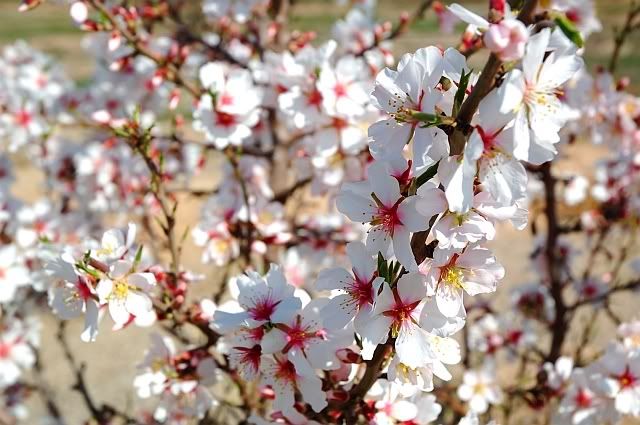
Nature has gifted us with an abundance of breathtaking sights, and one such marvel is the delicate and enchanting almond flower. Almond trees, scientifically known as Prunus dulcis, belong to the Rosaceae family and are native to the Middle East and Mediterranean regions. These stunning blossoms announce the arrival of spring, transforming vast landscapes into beautiful tapestries of white and pink hues.
The almond tree's blossoming season is a magical time, typically occurring in late winter or early spring, before the emergence of leaves. As the winter chill gives way to the gentle warmth of the sun, the almond trees awaken from their dormant state. The flowers burst forth, adorning the branches with clusters of soft, fragrant petals. It is a sight that evokes a sense of joy and anticipation, symbolizing the rejuvenation and renewal of nature.
Almond flowers are small, measuring only about an inch in diameter, and possess a five-petal structure. These petals can vary in color, ranging from pure white to shades of pale pink. Each blossom showcases a vivid center, composed of a multitude of stamens and a single pistil. The stamens bear the pollen-producing anthers, while the pistil holds the ovary, which eventually develops into the almond fruit.
The scientific name of the almond flower is Prunus dulcis var. dulcis, and it is closely related to other members of the Prunus genus, including cherries, peaches, and plums. This shared lineage is evident in the similarities in their flower structure and the overall appearance of the trees.
Almond trees have a rich history and are deeply intertwined with the culture and heritage of many regions. One such place where almond trees hold a special significance is Catalonia. The gentle Mediterranean climate and fertile soils of Catalonia provide an ideal environment for almond cultivation, making it one of the prominent almond-producing regions in Europe.
The almond blossoms are not only visually stunning but also play a crucial role in the pollination process. Bees and other pollinators are drawn to their nectar and pollen, ensuring the cross-pollination necessary for the production of almonds.
The blossoming period of almond trees in Catalonia typically occurs between January and February, marking the arrival of spring. It is a time of celebration, and local communities often organize festivals and events to honor the beauty and significance of the almond flowers. Visitors can immerse themselves in the exciting atmosphere, enjoying traditional music, dances, and local delicacies made with almonds. For example, in many towns of Lleida numerous activities are organized around almond trees in bloom. Check this interesting blog with pictures at Les Garrigues, Lleida.
The next time you witness the gentle embrace of almond blossoms, take a moment to appreciate the intricate beauty and botanical marvels they represent.
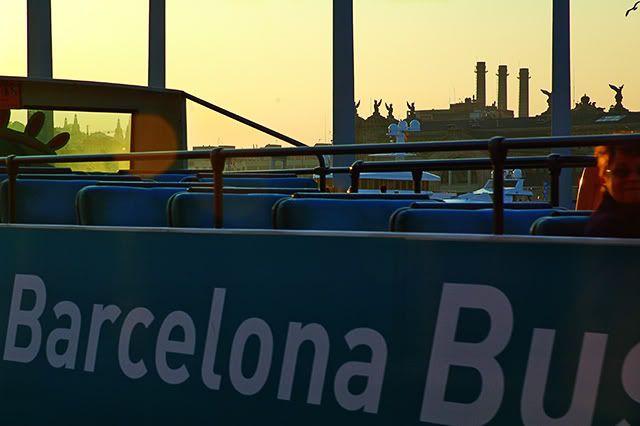
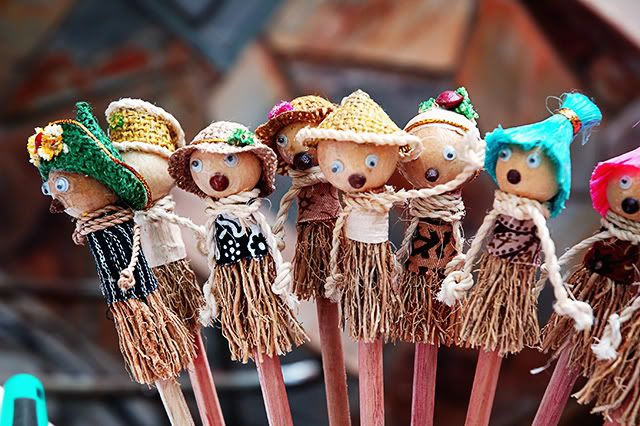

![Narrow Alley [enlarge]](https://i63.photobucket.com/albums/h135/carloslorenzo/NarrowAlley_.jpg)